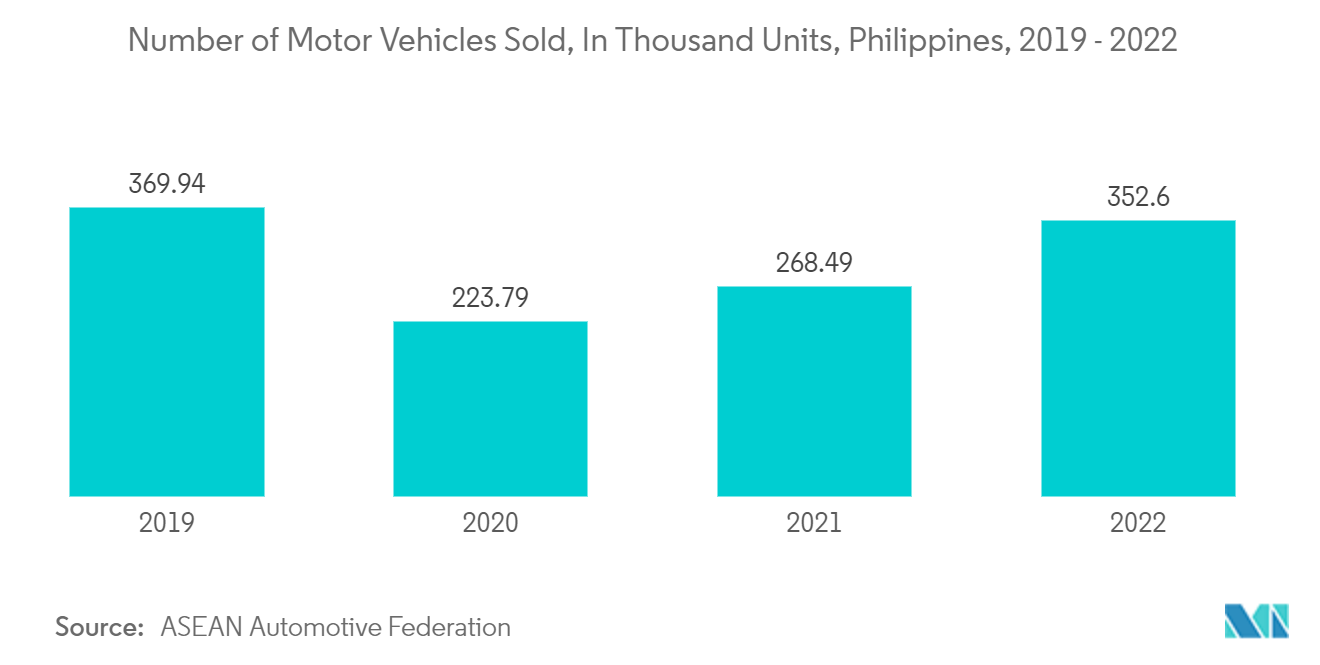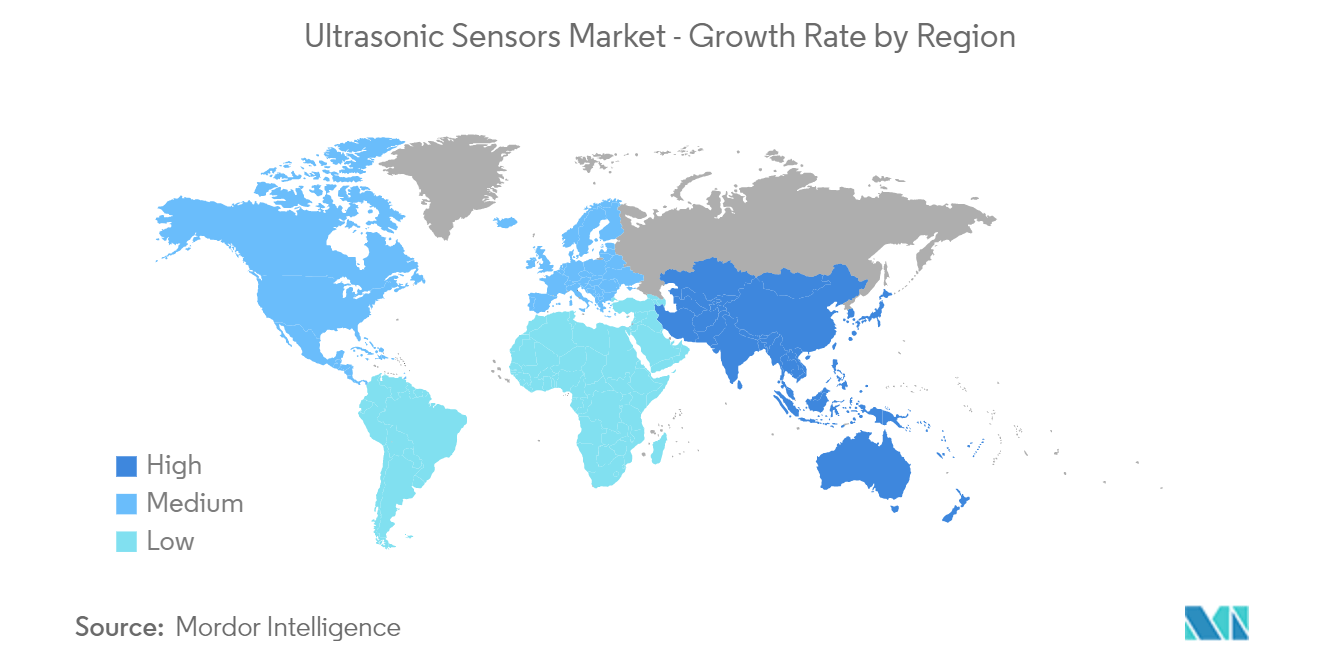Market Trends of Ultrasonic Sensors Industry
Automotive Industry to Create Huge Demand for Ultrasonic Sensors
- With the increasing production and sales of automobiles and increased customer expenditures, the automobile industry is expected to contribute to global growth opportunities for the Global Ultrasonic Sensors Market. For instance, according to OICA, the motor vehicle production volume in India in 2022 was approximately 5.5 million motor vehicles, an increase from 4.4 million in 2021.
- The Asia-Pacific region is witnessing increased sales of automobiles. For instance, according to the ASEAN Automotive Federation, in 2022, around 352.6 thousand motor vehicles were sold in the Philippines, an increase from 268.49 thousand in 2021.
- Ultrasonic sensors offer several applications in the automotive sector, such as parking assistance, safety alarms, collision avoidance, object detection, and automatic braking systems. They play an essential role in developing driver assistance and self-driving systems.
- Ultrasonic sensors are also used to measure the distance of objects. These sensors with long-range radar capabilities are now being integrated with the cruise control systems of automobiles to avoid collisions between vehicles. They are also used at the rear end for detecting distances, parking assistance, and automobile braking control.
- These sensors are used in onboard sensing systems in cars with autonomous and advanced features. These systems rely on ultrasonic sensors for measuring the relative distances of objects from the vehicle.
- Additionally, sensor vendors offer several ultrasonic sensors with increased capabilities like open structures, waterproofing, and external casing to reduce damage. Thus, ultrasonic sensors may witness proportional demand growth with the expected hike in ADAS systems.
- Moreover, automotive manufacturers are integrating automation technology to increase consumers' comfort, convenience, and safety. The increasing penetration of self-driving cars and the installation of collision detection systems to prevent automobiles are anticipated to accelerate the demand for ultrasonic sensors around the globe.

Asia-Pacific to Account for a Significant Share in the Market
- Asia-Pacific is a major manufacturer and consumer in the ultrasonic sensors market. Market penetration is relatively high in this region, and several automotive and manufacturing giants are boosting the market.
- According to the 13th Five-Year Plan of Smart Manufacturing, China is aiming to establish its intelligent manufacturing system and transform critical industries by 2025. At the 2020 National People's Congress, the CCP announced that, in addition to doubling down on its China Standards 2035 and Made in China 2025 initiatives, it might spend approximately USD 1.4 trillion on a digital infrastructure public spending program.
- China's New Infrastructure initiative presents several opportunities for global companies. Thus, the adoption of ultrasonic sensors in different sectors, such as automotive and industrial, is expected to grow, boosting the market's growth in the region.
- Players in the region are focusing on product innovation. For instance, a Xiamen, Fujian Province, China-based company, Ursalink, developed an IoT-level measurement solution working with its MB7380 (5m) and MB7383 (10m) ultrasonic sensors. Ursalink offers ultrasonic-level sensors.
- The presence of multiple automobile manufacturers and the electronic product manufacturing industry makes Japan a significant region for the market studied. The increasing focus of governments on deploying autonomous vehicles is also expected to create scope for the market. Japan's National Policy Agency announced it would lift the ban preventing SAE Level 4 autonomous vehicles from operating on Japanese roads. The policy change will allow autonomous vehicles to operate in a limited capacity from April 2023. The country aims to offer mobility services using Level 4 AVs in 40 areas by 2025 and in more than 100 areas by 2030.
- The 'Make in India' program places India on the world map as a manufacturing hub and gives global recognition to the Indian economy. Moreover, India's government aims for a USD 5 trillion economy by 2025, of which manufacturing may be worth USD 1 trillion. The convergence of flagship programs, such as Make in India with Skill India and Digital India, may be key to achieving this goal, thereby driving the country's market.
- The other countries considered in the Asia-Pacific region are South Korea, Indonesia, and Taiwan. The substantial presence in the semiconductor industry and South Korea's efforts to increase the manufacturing of semiconductors, electronics, and components are projected to contribute to the country's market share of ultrasonic sensors.

